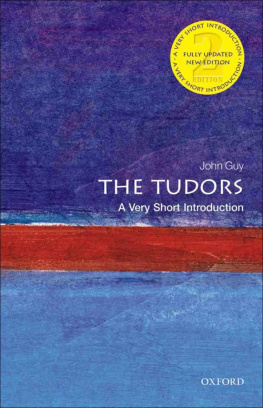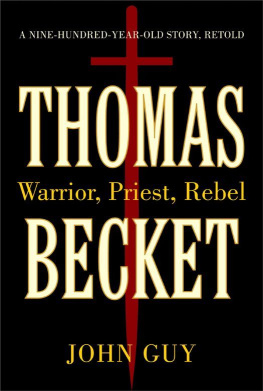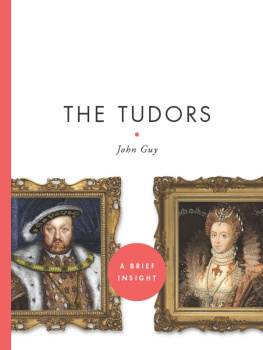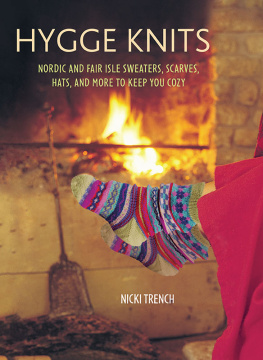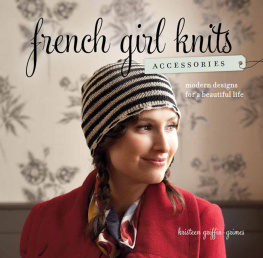Northern
Knits Gifts

Thoughtful Projects
INSPIRED BY FOLK TRADITIONS
LUCINDA GUY

EDITOR ERICA SMITH
TECHNICAL EDITOR AND ILLUSTRATOR THERESE CHYNOWETH
ART DIRECTOR LIZ QUAN
COVER & INTERIOR DESIGN LORA LAMM
PRODUCTION KATHERINE JACKSON
PHOTOGRAPHER JOE HANCOCK
2012 Lucinda Guy
Photography 2012 Joe Hancock, except: /Justinreznick, page 125 Lucinda Guy.
All rights reserved.

| Interweave Press LLC
201 East Fourth Street
Loveland, CO 80537
Interweave.com |
Library of Congress Cataloging-in-Publication Data
Guy, Lucinda.
Northern knits gifts: thoughtful projects inspired by folk traditions / Lucinda Guy.
pages cm
ISBN 978-1-59668-562-8 (pbk.)
ISBN 978-1-59668-797-4 (PDF)
ISBN 978-1-62033-162-0 (ePub)
1. Knitting--Patterns. 2. Knitting--Europe, Northern. 3. Knitwear--Design--Themes, motives. 4. Wool fabrics. I. Title.
TT819.E853G89 2012
746.43'2--dc23
2012017923
For Franois
I am deeply grateful to everyone at Interweave for making this book possible.
I extend heartfelt thanks to everyone involved, and especially Franois, for all their help, expertise, patience, and support.
I also owe a considerable debt of gratitude to all the yarn companies who so generously supplied me with wonderful woolen yarns.

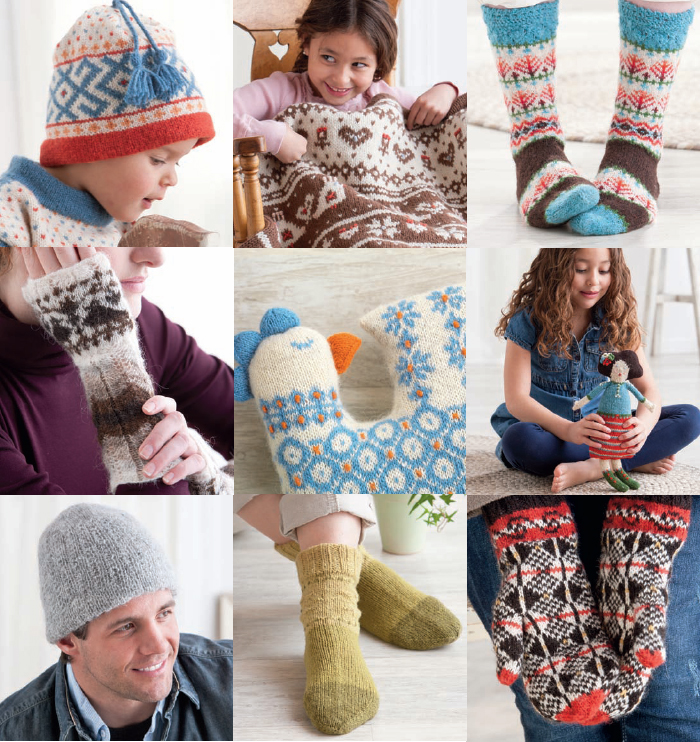
Contents

A house on the Swedish coast.
All the Scandinavian and northern countriesShetland Islands, Iceland, Sweden, Norway, Estonia, Faroe Islands, Finland, and Denmarkshare an inheritance of Viking traditions. This includes the use of beautifully ornate decoration depicting human forms, ferocious twisting and twining dragons, beasts, and plant shapes on wooden, woven, stone, and metal artifacts; a wealth of traditional handicrafts, such as weaving and rya; and a unique history of traditional knitting techniques such as twined and stranded knitwear. These countries also share geographical similarities: long, dark, extremely cold winters punctuated by the unique beauty of the northern lights, as well as the dependency on the sea, forests, and pastoral farmland for survival.
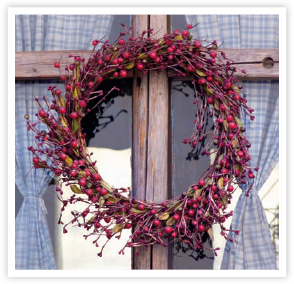
A festive garland hangs on a door in Finland.
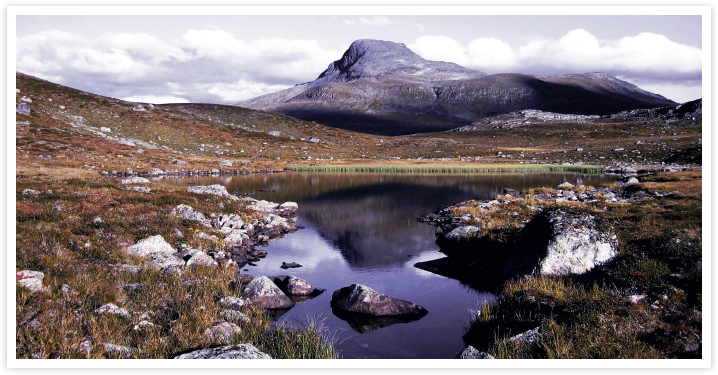
The Norwegian tundra.
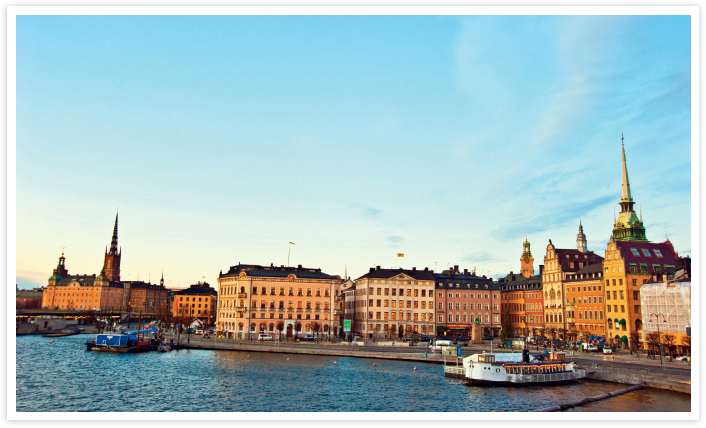
Stockholm, Sweden, in winter.
In the last thirty years or so, there has been a resurgence of interest in preserving knitting traditions and techniques that were in danger of dying out and being forgotten. Luckily, we are now more aware and reacquainted with these ancient techniques, and once again knitting from the past is much more prominent in the knitting of today. I am not trying to replicate or resurrect exactly the original knits that I have seen in museums or books, (although, the basic construction of knitted mittens, socks, hats, and sweaters have changed little over the decades), but rather to learn from and be inspired by themand to make contemporary projects suited to todays knitters and todays homes.
There is also a history of a collective Scandinavian love and appreciation of the natural world and a belief that all aspects of daily life should be enhanced through the use of beautiful everyday objects made from natural materials. Hygge (pronounced HOO-gah) is a Scandinavian word for this specific aesthetic that, although not easily translatable, can mean warmth, humor, comfort, tenderness, contentment, and well-being. It can be applied not only to things, which should be shared in a loving and generous way, but also to people and environments.
With this shared history, textile heritage, and joy of hygge, Scandinavia offers an intriguing fusion of old and new ideas. Inspired by these traditions, I have designed Northern Knits Gifts as a celebration of the handknitted gift. Traditional northern folk knitwearsocks, stockings, mittens, shawls, fishermans sweaters, caps, and jacketshas a long association of being offered or exchanged as a gift, a practice that, as we are all familiar with, continues today. By using traditional techniques, we can create beautiful everyday objects and garments that lift our spirits and make the act of giving a more enjoyable and pleasurable experience.
When knitting these projects you are effectively creating gifts that encapsulate traditions and heritage. Gifts connect us with our past and our ancestors, and gifts celebrate the here and now. Using this book will help to keep knitting rooted in the everyday ritual of living, making, creating, and gifting for yourself, family, and friends.
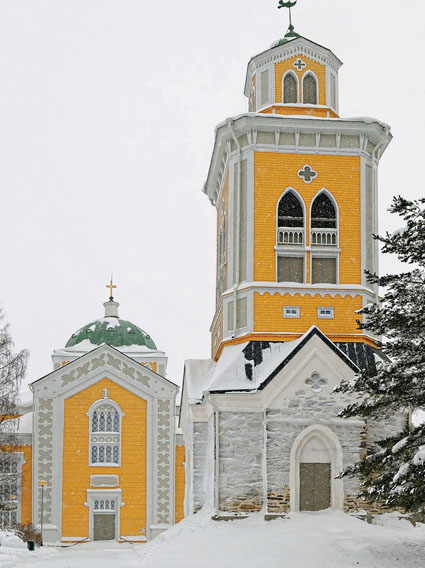
A beautiful yellow church in Estonia.
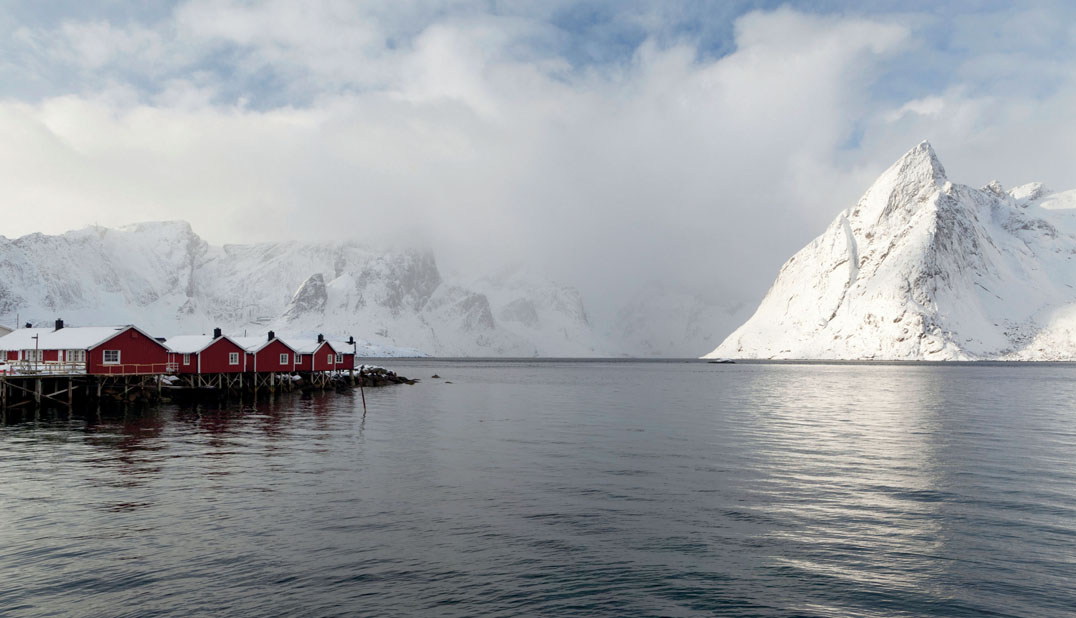
A break in the clouds in Moskenes Harbor, Lofoten Islands, Norway.

In this collection, I have used the instantly recognizable stranded or Fair Isle techniques for classic, bright, patterned knitwear and the ancient and beautiful Swedish twined or twoended knitting technique to create a unique wonderfully firm and double-thick fabric that is ideal for making mittens and socks.
I have also adapted the rya technique, creating a simplified version that is suitable for using on knitwear.
Rya
Originating in Finland, a rya (or ryijy) is essentially a loom-woven textile with a linen warp onto which small bunches of woolen threads are knotted by hand. This process creates a shaggy wool pile. Rya creates wonderful rugs and blankets that originally were used for bedding and sleigh rides. Ryas are ideal for the severely harsh winter climate of the northern landsnot only durable and practical, but also exceptionally luxurious.
Early ryas were made from naturally occurring shades of wool. Gradually, plant dyes, such as birch leaves, barks, and cones were used to introduce color. Ryas were an essential and much prized part of a brides dowry; they could be used as a currency and even used to pay taxes!


